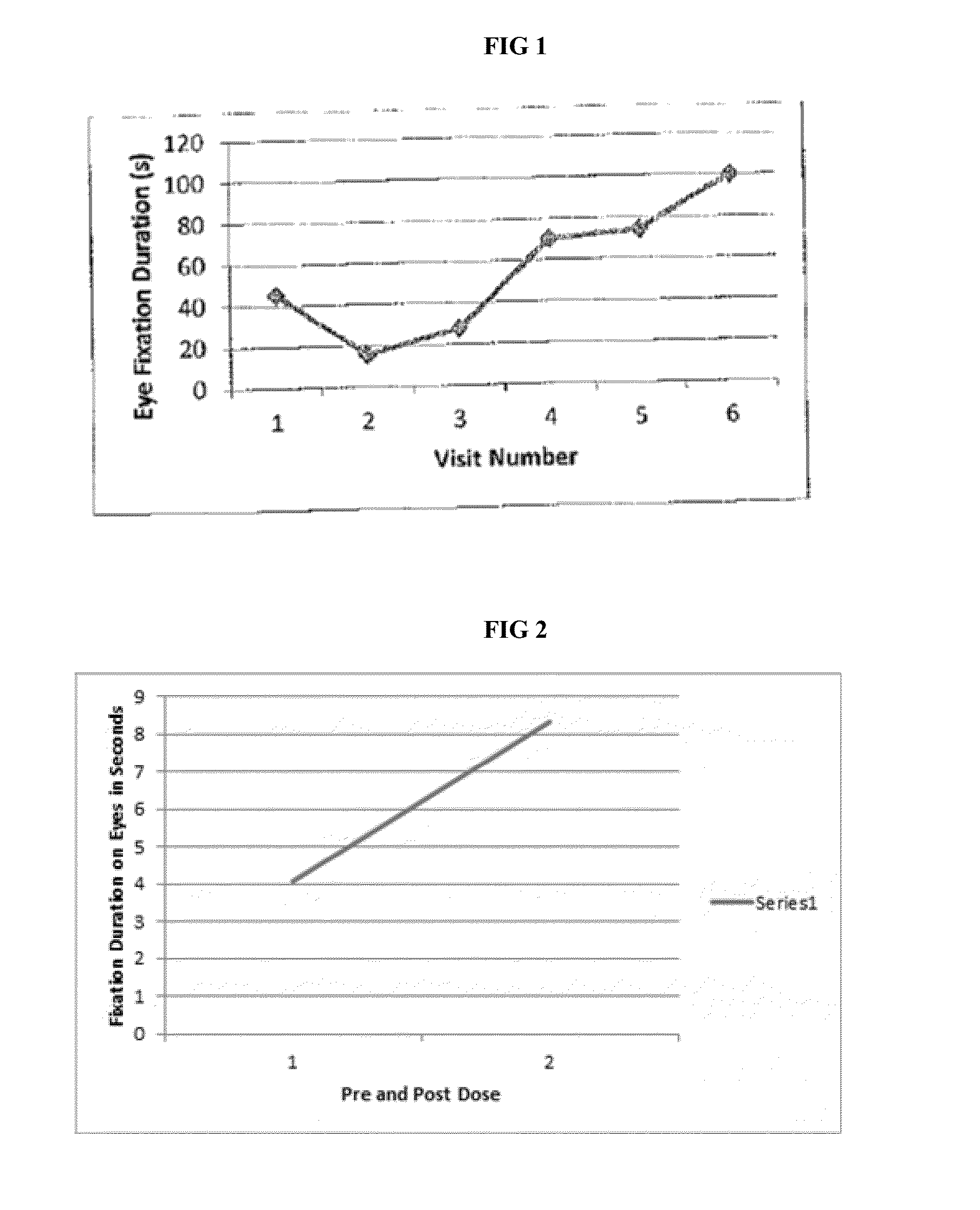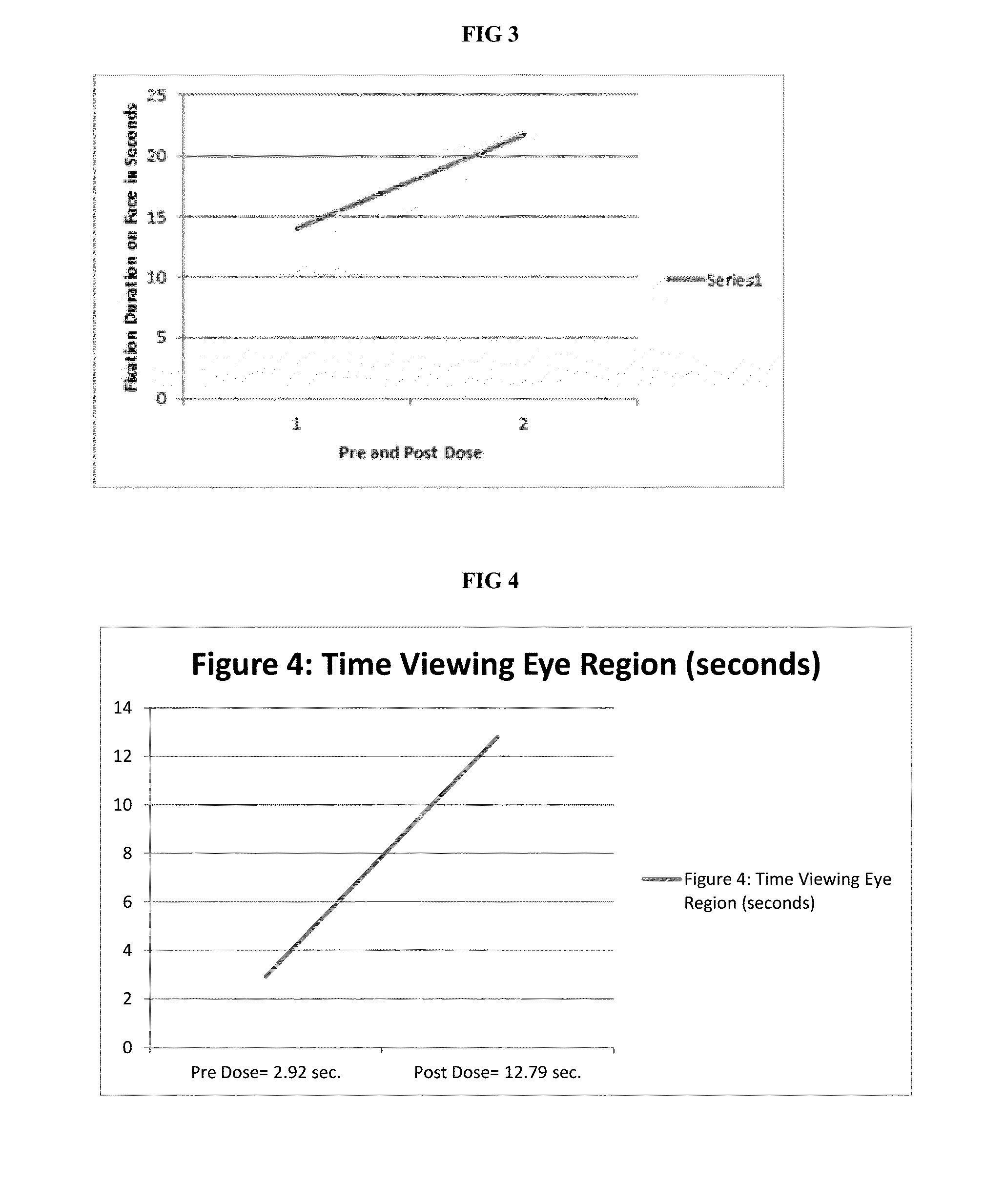Compositions and methods for treating an autism spectrum disorder
a technology for autism spectrum disorders and compositions, applied in the direction of drug compositions, biocide, nervous disorders, etc., can solve the problems of slow development, no fda-approved medications for treating the core social impairment associated, and limited availability of objective outcome measures
- Summary
- Abstract
- Description
- Claims
- Application Information
AI Technical Summary
Benefits of technology
Problems solved by technology
Method used
Image
Examples
example 1
[0040]Ketamine is compounded into a mucosal atomization device which delivers 20 mg of atomized ketamine per 0.1 cc spray. The subject will self-administer (or administer with the help of a caregiver) ketamine every four to seven days. On the first administration, 2 sprays are administered. On subsequent administration days, one spray will be added to the dosage, unless the subject reaches treatment response as described herein. Where a treatment response is obtained, the dose will remain constant at this minimally effective dose throughout treatment. If an adverse effect is observed, the dose will be decreased to a previous tolerable dose for the remainder of treatment.
[0041]Treatment response is defined as a score of 1 “very much” or 2 “much improved” on the CGI Improvement scale (CGI-I) and 0.25% improvement on the ABC-SW. Additional subject and / or caregiver report measures will include the Social Responsiveness Scale (SRS), Anxiety Depression and Mood Scale (ADAMS), Yale-Brown O...
example 2
[0043]Ketamine is compounded into a mucosal atomization device which delivers 20 mg of atomized ketamine per 0.1 cc spray. The subject will self-administer (or administer with the help of a caregiver) ascending doses of 20 mg at week 1, 40 mg week 2, 60 mg week 3, 80 mg week 4, unless the subject reaches treatment response as described above or experiences adverse effect prior to reaching 80 mg dose. In case of treatment response, dose will remain constant at the minimally effective dose throughout treatment. In case of an adverse event, the dose will be decreased to the previous tolerable dose.
example 3
[0044]The patient is a 29-year-old woman with ASD, Anorexia Nervosa, Obsessive-Compulsive Disorder, and Major Depressive Disorder. She has a 15 year history of debilitating psychiatric illness, with over 30 psychotropic medication trials, multiple psychiatric hospitalizations, residential treatment, electroconvulsive therapy, weight restoration therapy, and one suicide attempt. Symptoms at presentation included social impairment, repetitive behaviors, need for sameness, sensory sensitivity, contamination fears, low weight, absent menstrual cycles, chronic purging, depressed mood, anhedonia, low energy, poor concentration, and chronic suicidality. Daily medications included selegiline transdermal, lamotrigine, naltrexone, and clonazepam. Despite extensive treatment, she remained significantly disabled and had recently taken a medical leave from graduate school. After discussion of the potential risks, the patient elected to undergo IN ketamine treatment.
[0045]Baseline comprehensive a...
PUM
| Property | Measurement | Unit |
|---|---|---|
| concentration | aaaaa | aaaaa |
| concentration | aaaaa | aaaaa |
| autism spectrum disorder | aaaaa | aaaaa |
Abstract
Description
Claims
Application Information
 Login to View More
Login to View More - R&D
- Intellectual Property
- Life Sciences
- Materials
- Tech Scout
- Unparalleled Data Quality
- Higher Quality Content
- 60% Fewer Hallucinations
Browse by: Latest US Patents, China's latest patents, Technical Efficacy Thesaurus, Application Domain, Technology Topic, Popular Technical Reports.
© 2025 PatSnap. All rights reserved.Legal|Privacy policy|Modern Slavery Act Transparency Statement|Sitemap|About US| Contact US: help@patsnap.com



